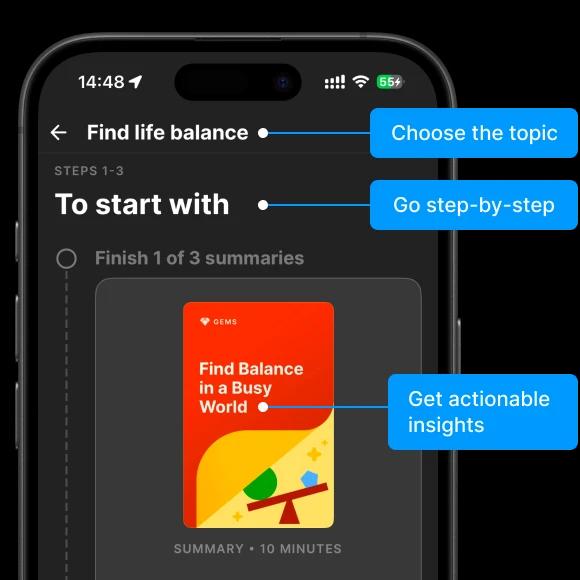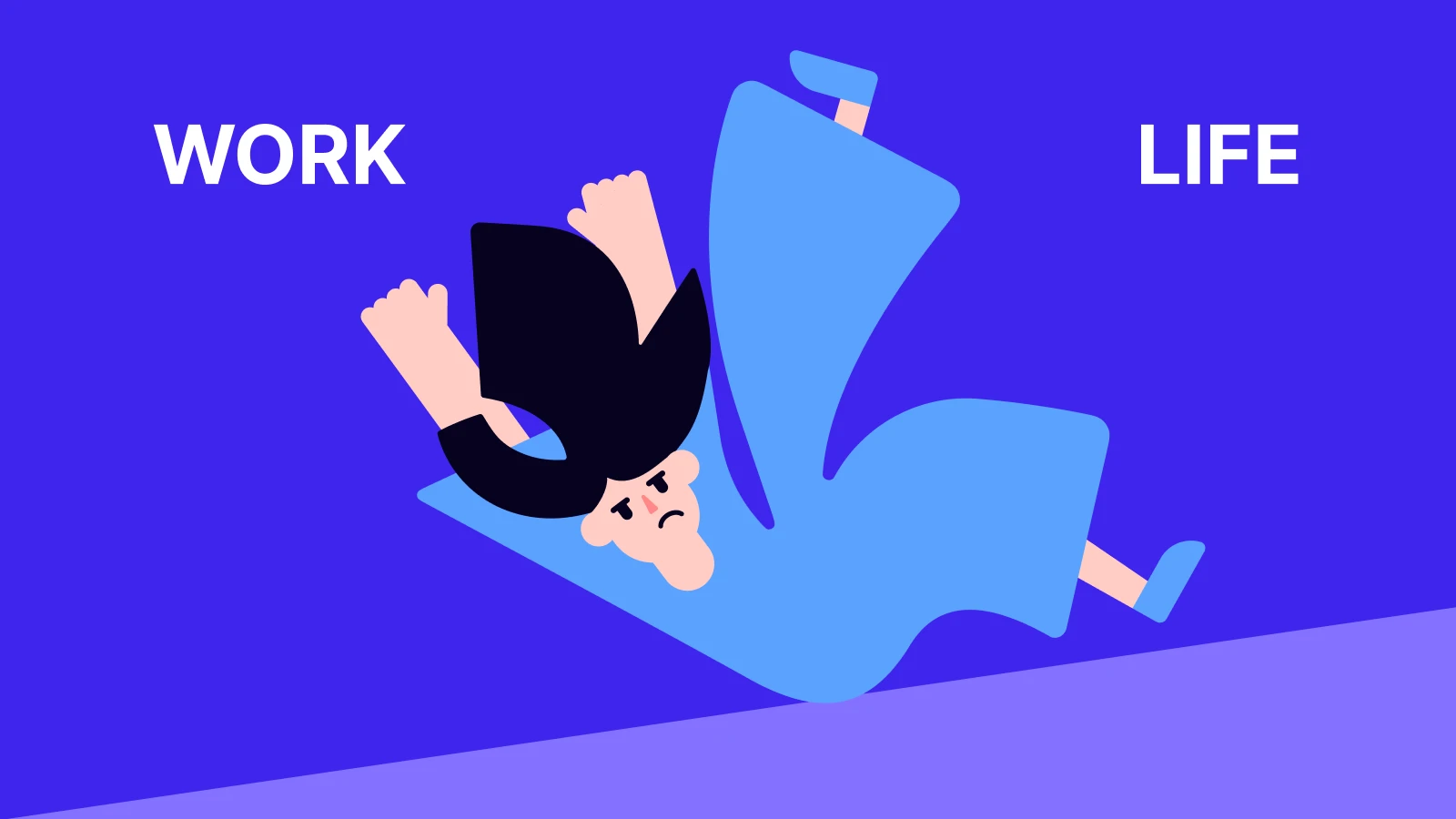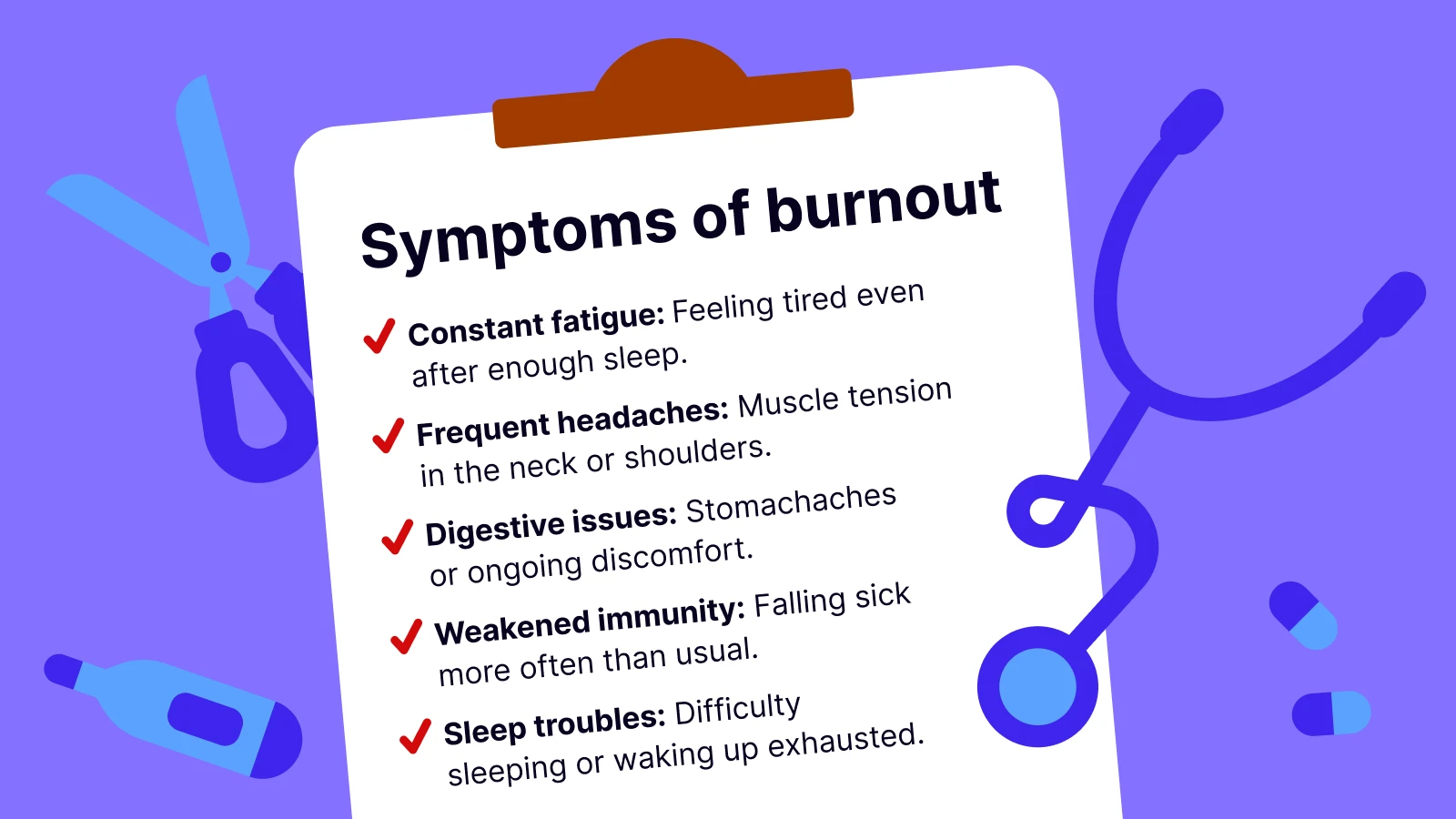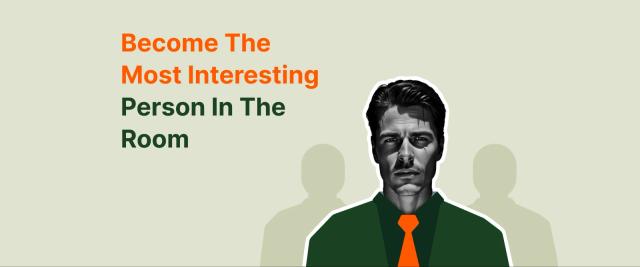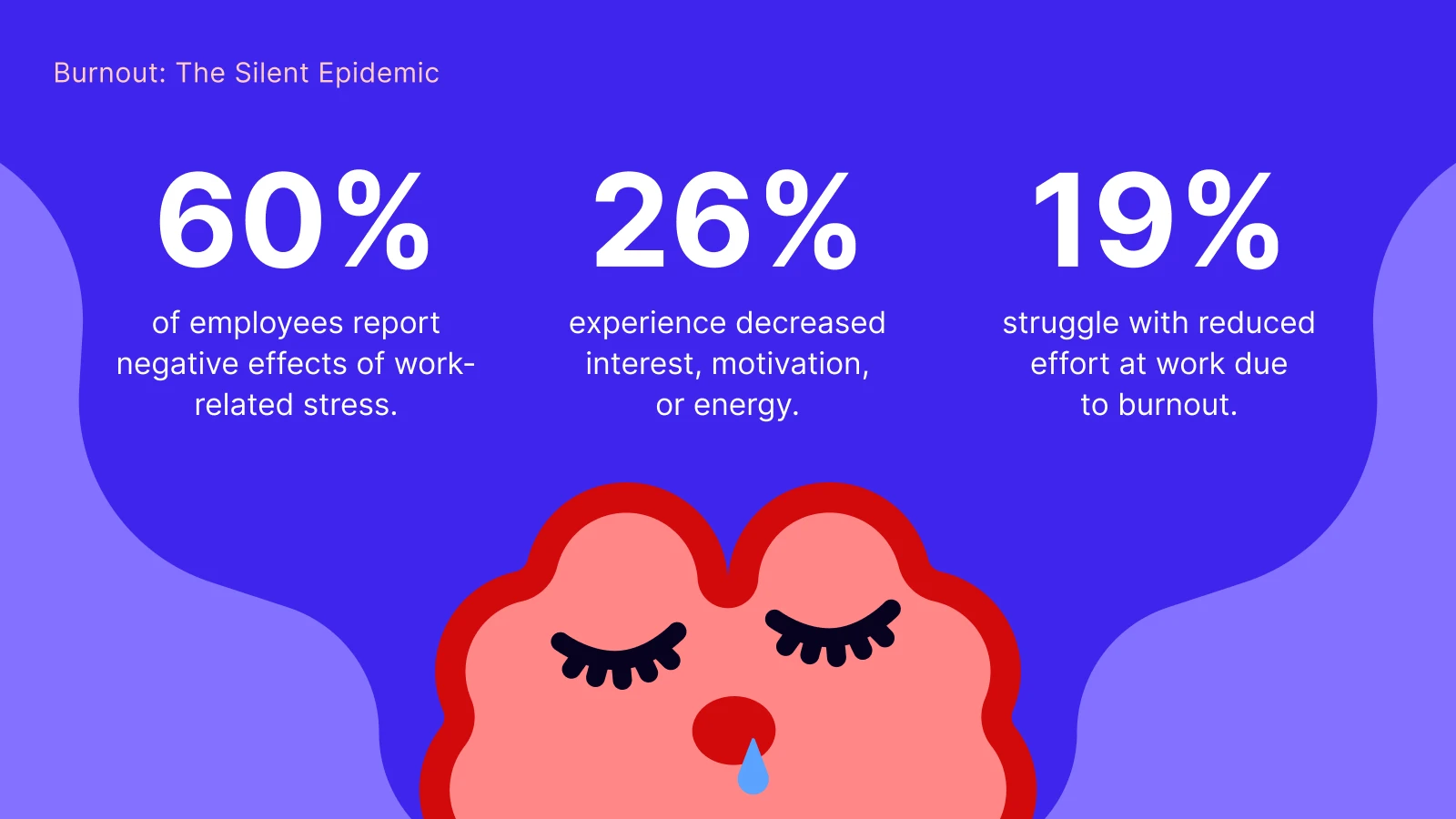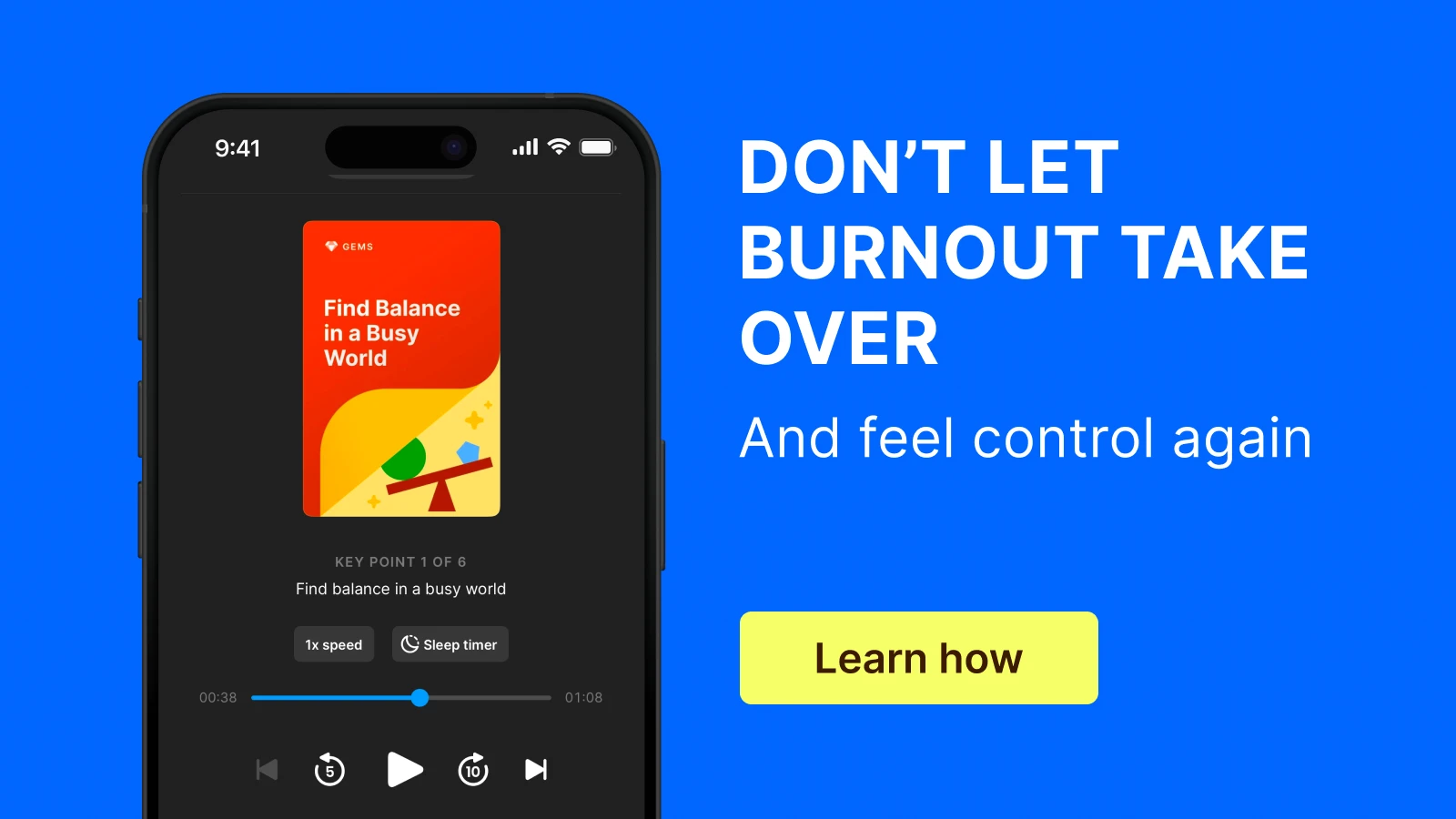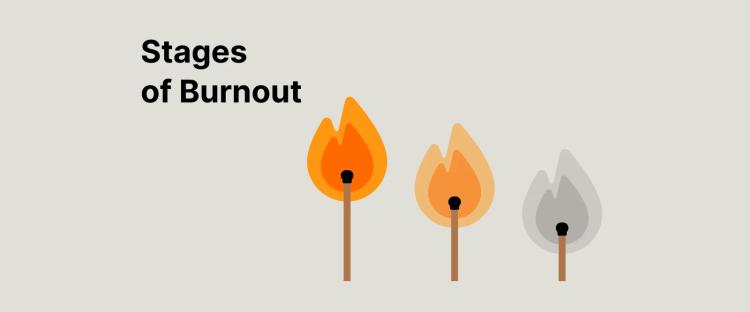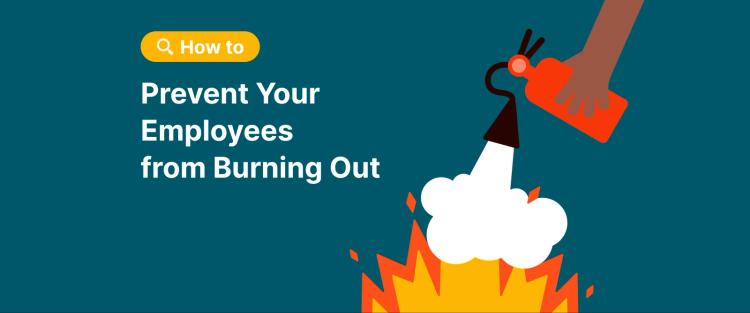Burnout, recognized by the World Health Organization as an occupational phenomenon, is becoming a silent epidemic affecting millions worldwide. American Psychological Association reports that nearly 60% of employees reported negative impacts of work-related stress, including lack of interest, motivation, or energy (26%) and reduced effort at work (19%) due to job burnout. Yet workplace stress is just one piece of the puzzle.
The impact of burnout extends far beyond the workplace: it can come from societal pressures, personal expectations, and the constant demands of modern life. As trauma expert Bessel Van der Kolk explains,
"Burnout is what happens when we can't turn off the alarm system."
This condition isn't just about feeling tired — it's about prolonged, unrelenting stress that leaves you physically, emotionally, and mentally drained.
"Burnout doesn't occur because we're weak or inadequate. It occurs because we're human beings with a limited capacity to handle unrelenting stress without renewal."
With societal pressures and demanding lifestyles rising, understanding burnout has become crucial for protecting your well-being. You can learn about it in the Headway app — an app with book summaries that cover the themes of wellness, mental health, and burnout itself.
Download Headway today and gain the knowledge that can help you prevent burnout!
Quick answer: Seven burnout signs that can't be ignored
Constant fatigue, even if you believe you've had enough sleep.
Heightened irritability, where even minor inconveniences trigger strong reactions.
Pulling away from friends, loved ones, and family members because socializing feels like too much effort.
Frequent headaches or muscle tension, especially in your neck or shoulders.
Overwhelming hopelessness, struggling to see a path forward.
Turning to distractions, like endless scrolling on social media or binge-watching TV, can leave you feeling numb rather than rejuvenated.
Trouble sleeping, whether it's difficulty falling asleep or waking up and still feeling exhausted.
Continue reading and learn the full list of symptoms to watch out for!
What is burnout? (It's more than just being tired)
Think of your nervous system as a car engine built for quick bursts of speed. Stress can be useful, like pressing the gas pedal to pass another car. But if you keep the pedal down constantly, the engine overheats. Burnout is your body and mind's way of saying, "Enough! I can't keep running like this."
Van der Kolk explains,
"When people are chronically stressed, their bodies react as if they are in constant danger—flooded with stress hormones, muscles tensing, and the mind racing. Burnout occurs when we lose the ability to turn off this alarm system."
Burnout comes in stages and is more than temporary exhaustion. It is a total physical, emotional, and mental exhaustion. Even things you used to enjoy can feel overwhelming. Like a snowball rolling downhill, it builds gradually as constant stress accumulates from various sources — school, relationships, or high expectations.
So, how can you tell the difference between being exhausted and burning out?
Burnout vs. exhaustion: How to tell the difference
It's normal to feel tired after a busy day of work, studying, or physical activity. Low energy levels are temporary and can usually improve with rest, a good meal, and relaxation. Burnout, however, is different. It's when you feel constantly drained, no matter how much you rest, like a battery that won't recharge. It's more than just being tired — you might feel unmotivated, disconnected, or even hopeless. If you find yourself in this state, reach out to your healthcare provider or mental health professional and seek help.
Understanding your nervous system helps explain the difference. Every day stress or exhaustion triggers your "fight-or-flight" response, but your body naturally returns to balance once it subsides. With burnout, your nervous system becomes stuck in overdrive or a collapsed "freeze" state. It's essential to recognize that the risk of burnout or even trauma increases when stressors continue without relief.
"Burnout doesn't occur because we're weak or inadequate. It occurs because we're human beings with a limited capacity to handle unrelenting stress without renewal."
To summarize:
Temporary exhaustion: You feel tired, but you recover after a break, a healthy routine, or some leisure time.
Burnout: A feeling of exhaustion that doesn't resolve by itself, even with rest or everyday recovery efforts. It's often accompanied by difficulties maintaining a work-life balance. You may feel persistently disconnected from yourself and others, noticing impacts across your home life and relationships with loved ones.
Understanding how burnout manifests physically is crucial for recognizing it before it takes a heavy toll on all areas of your life. Let's explore the physical symptoms that frequently accompany burnout.
What are the most common causes of burnout?
Burnout occurs when you're under too much pressure with inadequate recovery time or resources to balance it out. Some of the most common causes include:
Long hours at work or school without breaks.
Lack of support in stressful environments, such as demanding jobs or challenging family situations.
Perfectionism, where nothing you do ever feels good enough.
Caregiving roles, like looking after a sick family member, can lead to caregiver burnout.
In addition, modern Western culture amplifies these pressures. Social media fuels comparison, making it easy to feel like you're falling short. The relentless pressure to be constantly "productive" or "perfect" is one of the reasons why so many people experience burnout without even realizing it.
Chronic workplace stress is another major contributor, particularly in high-achievement professions such as healthcare or caregiving. For deeper insights into these societal factors, Burnout Society provides an in-depth exploration of how modern life intensifies the risk of burnout.
Understanding how burnout manifests physically is crucial for recognizing burnout before it takes its toll. Let's explore the physical symptoms that frequently accompany burnout.
Five physical signs and symptoms of burnout
Burnout often manifests in the body first because chronic stress affects your nervous system, which can lead to symptoms resembling those of a medical condition, making it even more important to maintain a healthy diet to support recovery and resilience. Some common physical symptoms include:
Constant fatigue, even if you believe you've had enough sleep.
Frequent headaches or muscle tension, especially in your neck or shoulders.
Stomachaches or digestive issues.
Getting sick frequently, such as catching colds easily (since stress weakens your immune system).
Trouble sleeping, whether it's difficulty falling asleep or waking up and still feeling exhausted.
Burnout can feel like your body is carrying an invisible weight. You might notice clenching your jaw or feeling a restless urge to move as if you can't sit still. These physical symptoms are your body's way of signaling that it's struggling to cope with the ongoing stress.
Five emotional signs of burnout
Emotionally, burnout often feels like a draining mix of frustration, sadness, and numbness. You may find yourself experiencing:
Constant anxiety, feeling on edge as if waiting for something to go wrong
Heightened irritability, where even minor inconveniences trigger strong reactions
Emotional detachment and depersonalization, feeling disconnected or like you're just going through the motions
Overwhelming hopelessness, struggling to see a path forward
Loss of interest in activities that once brought you joy
Burnout can also trigger self-doubt, making you question whether you're good enough or capable, even when there's no objective evidence to support these thoughts. These feelings can spiral into more serious mental health challenges, such as clinical depression, if left unchecked.
Recognizing these emotional warning signs early is essential to safeguarding your mental health and overall quality of life. As highlighted in 'Burnout: The Secret to Unlocking the Stress Cycle' by Emily Nagoski and Amelia Nagoski, emotional exhaustion is not just a personal failing — it's a biological response to chronic stress.
While emotional symptoms are significant, burnout doesn't stop there — it also influences how you behave in your day-to-day life. Let's explore the behavioral signs that often accompany burnout.
Four behavioral signs and symptoms of burnout
Burnout doesn't just affect how you feel — it changes how you act. You might start avoiding tasks or procrastinating because even simple activities feel overwhelming. Some common behavioral signs include:
Pulling away from friends, loved ones, and family members because socializing feels like too much effort.
Turning to distractions, like endless scrolling on social media or binge-watching TV, can leave you feeling numb rather than rejuvenated.
Gaining disrupted eating patterns, either overeating, undereating, or relying heavily on caffeine and sugar to get through the day.
Having difficulty with maintaining focus, even on tasks you want to complete
Healthcare professionals report that burnout often creates a cycle of neglect. You may find yourself skipping meals, ignoring your body's basic needs, or neglecting self-care — not because you don't care, but because you've simply run out of resources. Even the most mundane tasks can feel impossible when your body and mind remain in survival mode. Recognizing these patterns is key to breaking the cycle and regaining control.
Understanding the causes of burnout is the first step toward addressing it, but knowing how to recover is equally important. Once you've identified the factors contributing to your burnout, it's time to focus on actionable strategies to heal and regain your balance.
How to recover from burnout: Seven strategies that work
Recovery begins with acknowledging that burnout has taken hold. Awareness is key, yet sometimes it is the hardest step. Once you know what's happening, here are some steps to help you recover from burnout:
Rest: Allow yourself to take breaks, even if it feels hard. Rest is essential for your body and mind to recover. Take as much time as needed and trust your body's wisdom.
Reconnect with your body: Simple movements like stretching or walking can help your nervous system reset.
Set boundaries: Learn to say "no" to tasks or commitments that push you beyond your limits.
Find support: Talk to someone you trust, such as a friend, a support group, a family member, or a therapist. You don't have to face this alone.
Reevaluate priorities: Take time to reflect on what truly matters to you. Sometimes, reducing unnecessary stressors can make a significant difference.
Practice mindfulness: Activities like meditation or deep breathing can help you slow down and center yourself. Consider trying somatic practices to release stress energy from your body.
Improve your work environment: Make small changes to reduce stress and create a healthier balance between your professional and personal life.
By embracing these steps, you can rebuild your resilience and prevent future burnout. The key is prioritizing your well-being and giving yourself the time and space to recover fully.
Five best books for burnout recovery: Expert recommendations
If you're navigating burnout, the Headway app offers valuable book summaries to guide you toward recovery and renewal. Here are five insightful books to help you understand and overcome burnout:
1. 'Burnout: The Secret to Unlocking the Stress Cycle' by Emily Nagoski and Amelia Nagoski
'The Power of Now' is a transformative guide that emphasizes living in the present moment as a way to release stress and find inner peace. Perfect for those overwhelmed by past regrets or future worries, this resource can help you reconnect with a calmer, more centered self.
3. 'Daring Greatly' by Brené Brown
In 'Daring Greatly,' Brené Brown explores the importance of vulnerability and self-compassion in overcoming feelings of inadequacy and exhaustion. Reading this guide can inspire you to embrace imperfection and build resilience against the pressures of burnout.
4. 'Atomic Habits' by James Clear
'Atomic Habits' is a practical guide to building good habits and breaking bad ones; it's ideal for anyone struggling to regain control over their daily routines. It offers actionable advice for creating sustainable changes that reduce stress and improve well-being.
5. 'Essentialism: The Disciplined Pursuit of Less' by Greg McKeown
'Essentialism' summary teaches you how to focus on what truly matters by eliminating unnecessary distractions and commitments. It's an empowering resource for simplifying your life and finding clarity amidst burnout-inducing chaos.
Every title on this list offers unique insights and actionable advice to help you manage stress, improve your mindset, and create a healthier, more balanced life. Access their summaries in the Headway app to gain practical takeaways quickly!
Overcome burnout with expert insights from Headway!
Slowing down is crucial. Your nervous system thrives when you're not constantly rushing. Spending time in nature, practicing mindfulness, or taking slow breaths can help restore balance. And don't forget about joy!
Reconnecting with things that make you happy — art, music, time with loved ones — reminds you of what really matters. Healing from burnout isn't just about reducing stress; it's about filling your life with things that nourish you.
Here's how Headway can help you with that: our microlearning app gives you 15-minute book summaries from experts on stress management, resilience, and burnout recovery.
With personalized recommendations, progress tracking, and daily insights, you can build habits that actually stick. Also, features like flashcards and spaced repetition ensure you remember what you learn and can apply it when you need it most.
Download Headway and prioritize what matters most: your health, your peace, and your life.
Frequently asked questions about the symptoms of burnout
How do you know if you're burnt out?
If resting doesn't actually fix how tired you feel, that's a big sign. You may feel numb, as if you're just going through the motions, or everything feels impossible. Your body shows it too: headaches, constant exhaustion, messed-up sleep. You stop wanting to hang out with people or do things you used to enjoy. Listen to what your body's trying to tell you.
What is the 42% rule for burnout?
Research found that working over 42 hours a week without decent breaks seriously increases your burnout risk. Basically, constantly working without recovery time creates the exact conditions for burnout. You can't just power through forever. Rest isn't a luxury — your body and brain literally need it to function properly.
What are the 3 R's of burnout?
First, Recognize — catch the warning signs before things get worse. Then Reverse — actually change what's burning you out and start rebuilding balance. Finally, Resilience — figure out boundaries and habits that keep you from ending up back here. Recovery isn't a one-time thing. It's about restructuring your life so this doesn't keep happening.
Why do women burn out more than men?
Women tend to burn out by taking on too many responsibilities (work, family, home, etc). Add the perfectionism, never saying no, and the guilt of having limits. There are also physical issues, like constantly being exhausted and fluctuating hormones. Society is telling women to do everything and balance it all perfectly, even though it is impossible to do so, especially without legitimate help or support.
What exercise is best for burnout?
Nothing intense. Try walking, gentle yoga, stretching, or swimming — activities that feel good and don't drain you. You're trying to calm down your nervous system, not push yourself harder. Exercise shouldn't be another source of stress on your list. Even 10 minutes of easy movement helps lower stress and lift your mood without demanding energy you don't have right now.


